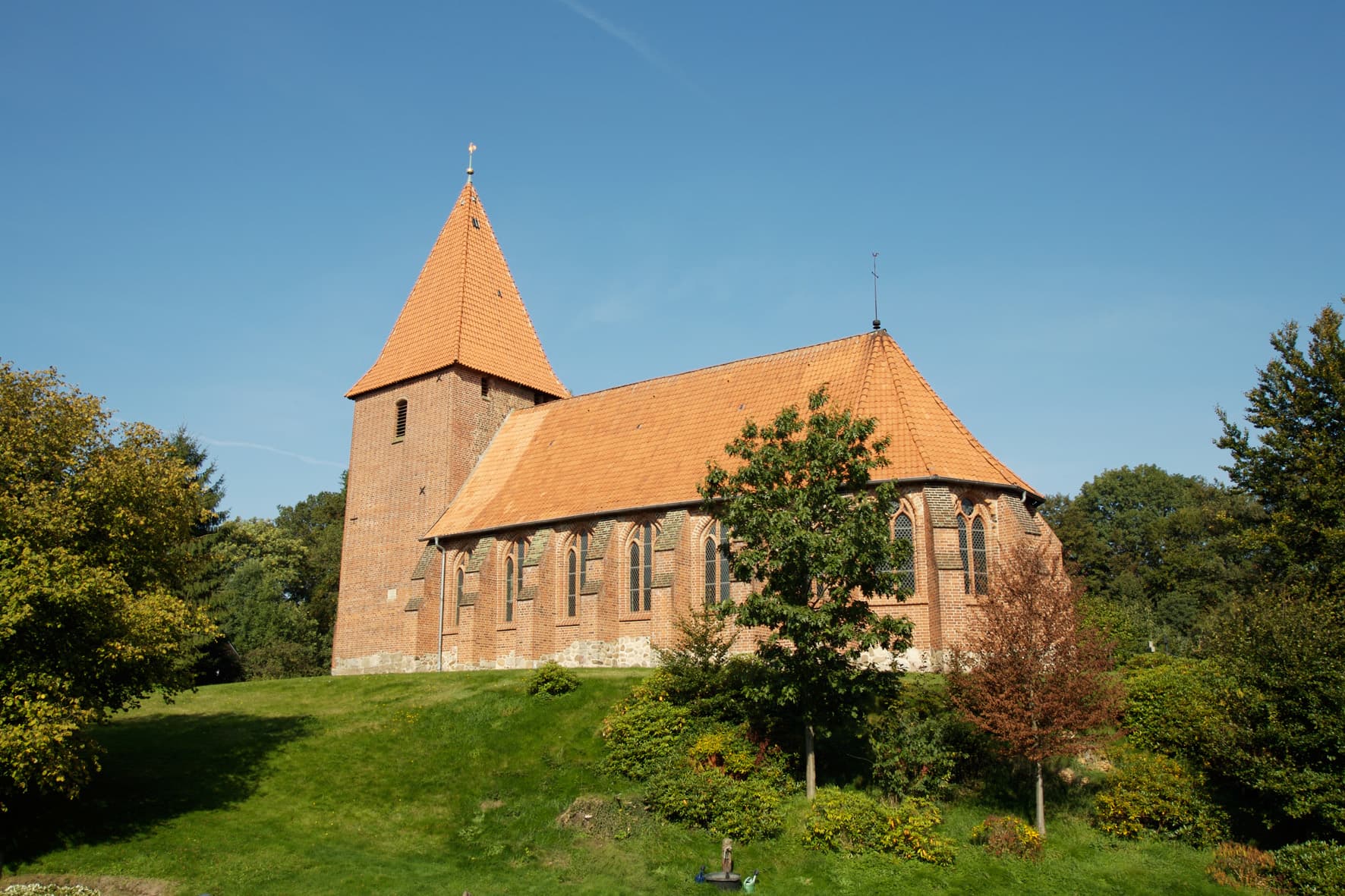
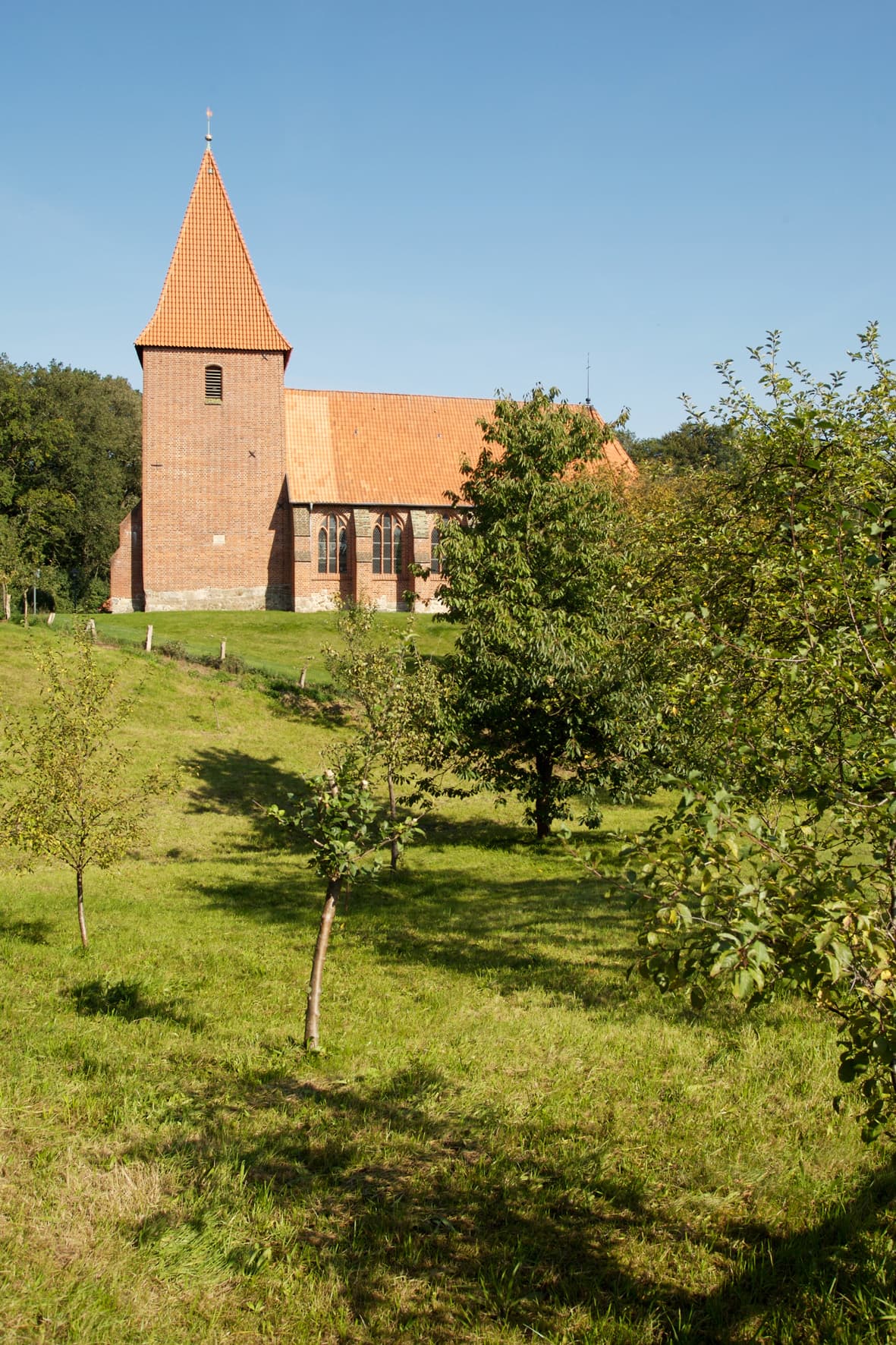
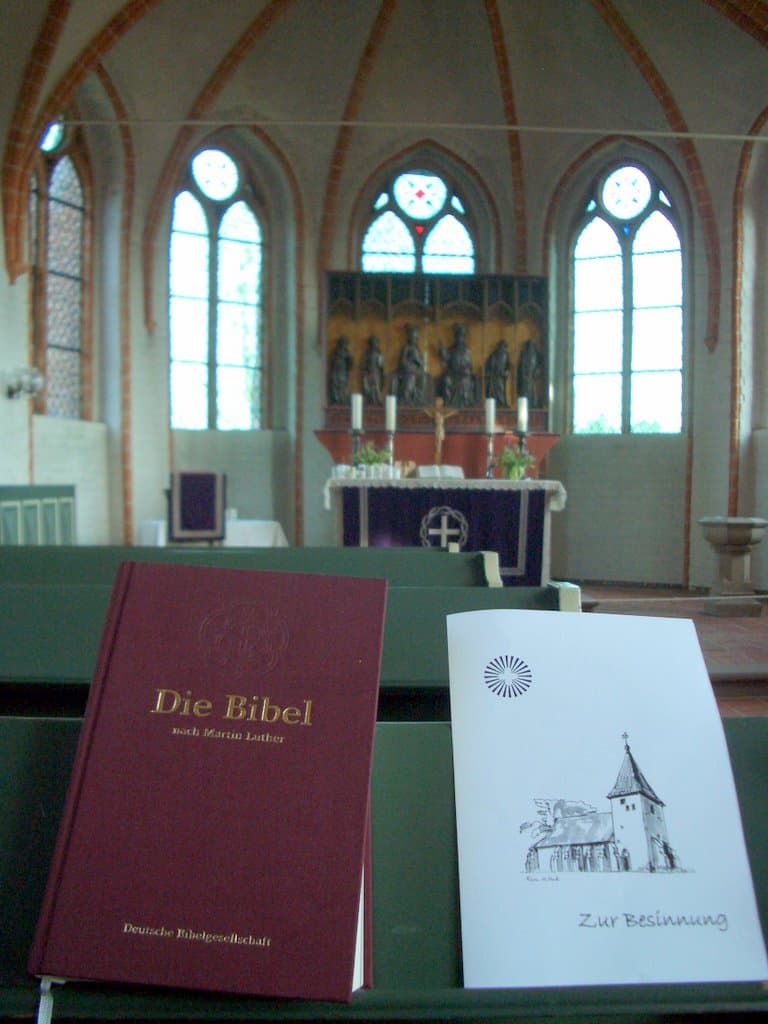
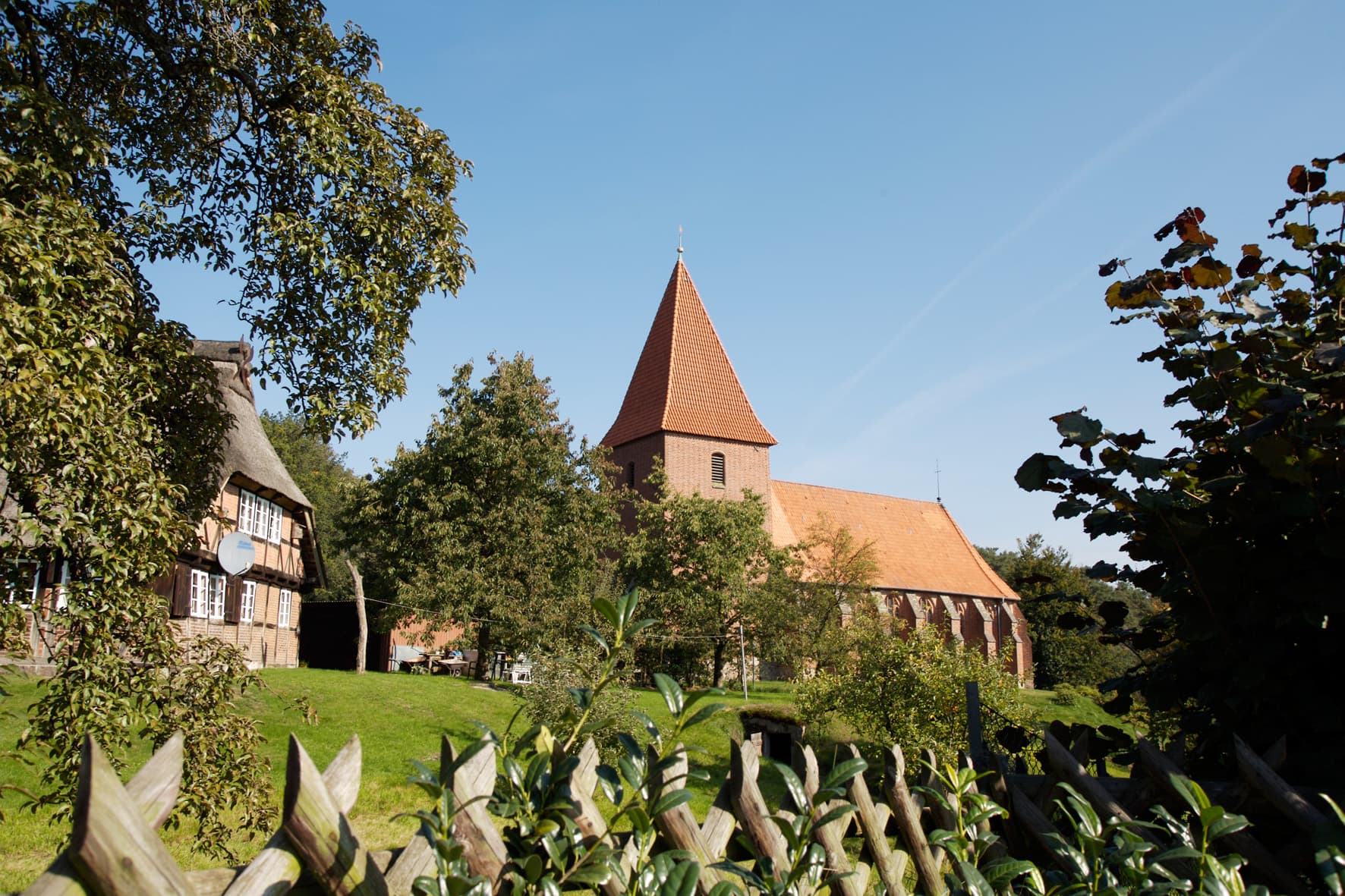
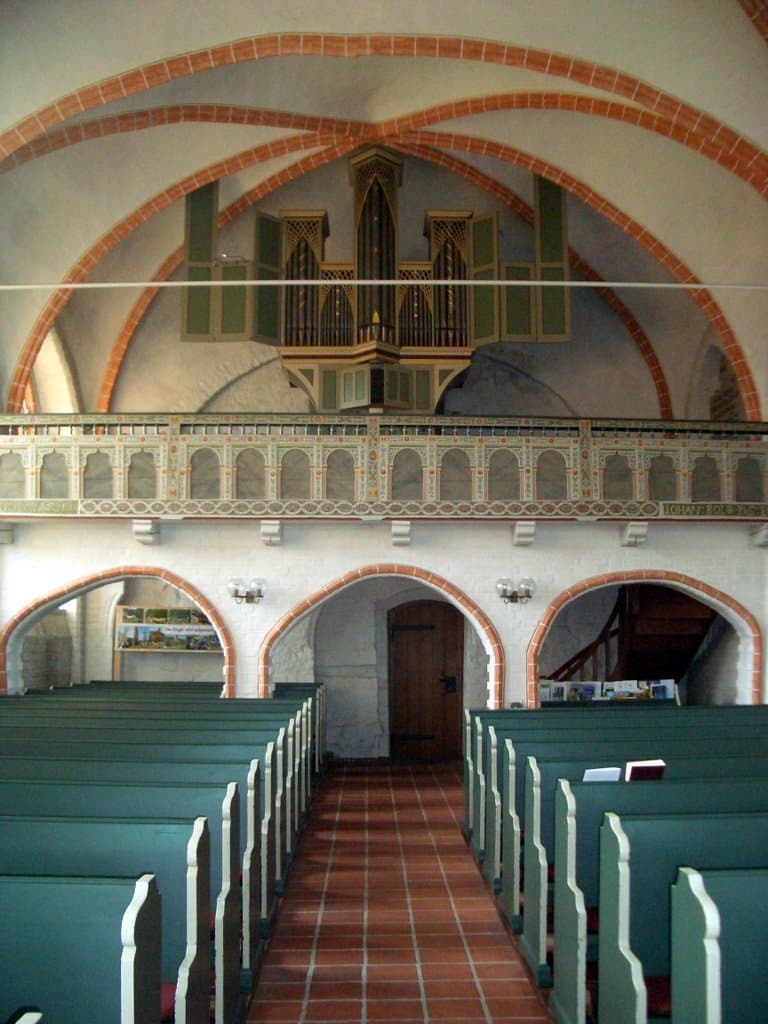
St Martin in Raven
Die Kirchturmspitze der gotischen Backsteinkirche St. Martin in Raven ist auch heute noch eine weit sichtbare Landmarke, die sich anzusteuern lohnt. Gerade Radfahrer und Wanderer genießen hier ihre wohl verdienten Pausen. Hier kann man bei einer stillen Andacht in der ruhigen und lichtdurchfluteten Kirche oder bei einem schweifenden Blick von dem Kirchhügel neue Kräfte tanken.
Geschichtliche Eckdaten der St.Martins Kirche
Die St. Martin-Kirche in Raven wird in schriftlichen Quellen, die sich zwischen 1250 und 1253 datieren lassen, erstmals erwähnt. Bei Sanierungsarbeiten zwischen 1988 und 1990 wurden Grundmauerreste einer früheren reckteckigen Feldsteinkirche mit Chor und Turm aus der Zeit um 1200 gefunden. Die heutige gotische Backsteinkirche entstand erst zwischen 1400 und 1425. Der wuchtige, nahezu quadratische Westturm wurden um 1600 angebaut.
Ein Blick in das Innere des Kirchengebäudes
Im Inneren der St. Martin-Kirche können Sie den spätmittelalterlichen Schnitzalter (ca. 1430) von Hans Snitker dem Älteren bewundern. Auf dem Schnitzalter sind vor mattgoldenem Grund sechs Heiligenfiguren aus Eichenholz zu sehen. In der Mitte sitzen Maria und Jesus Christus auf dem Thron der Ewigkeit, links davon stehen Johannes mit Kelch und Petrus mit dem Schlüssel, rechts davon Paulus mit dem Schwert und Jakobus mit dem Pilgerhut, Pilgertasche und –stab.
Die Kirchenglocke
Das älteste Kunstwerk der St. Martin-Kirche ist allerdings mit dem bloßen Auge gar nicht zu sehen: eine von Meister Ulricus gegossene Kirchenglocke aus dem Jahr 1309. Diese und die zweite Glocke aus dem Jahr 1697 begleiten die Lebenden zum Gottesdienst und die Toten zur letzten Ruhe auf dem unterhalb der Kirche gelegenen „Kirchhof“.
Gebet der Gemeinde
Was auf der großen Glocke steht ist noch heute das Gebet der Gemeinde: O REX GLORIAE, VENI CUM PACEI („O König der Herrlichkeit, komm mit Frieden!“)
Die gotische Backsteinroute
„Über Jahrhunderte prägte die Hanse das Leben entlang der Ostseeküsten. Hier lag das Zentrum der europäischen Wirtschaft im Mittelalter. Viele Zeugnisse von Reichtum und Macht blieben erhalten: Klöster und Rathäuser, Stadttore und Mauern, Hallenkirchen und Basiliken. Sie sind die historischen Symbole geistlicher und weltlicher Stärke.
Der mittelalterliche Backstein prägt das Bild vieler Städte an den Küsten und im Hinterland. Jeder der charakteristischen roten Ziegel wurde von Hand gefertigt, jeder Bau ist ein Meisterwerk. Früher wie heute sind sie Landmarken und Wahrzeichen.
Die Europäische Route der Backsteingotik (EuRoB) verbindet die Zeugen der Hansezeit. Schweden und Dänemark, die baltischen Länder, Polen und Deutschland sind Ihre Gastgeber. Entdecken Sie die Spuren der Vergangenheit, reizvolle Landschaften und die Vielfalt entlang der Europäischen Route der Backsteingotik.“
Die St. Martin-Kirche in Raven ist eine von vielen gotischen Backsteinbauten im Raum Lüneburg. Wenn Sie weitere gotische Backsteinbauten besuchen und ihren Anblick genießen wollen, dann sollten Sie Ihre Ausflüge entlang der „Europäischen Route der Backsteingotik“ planen.
